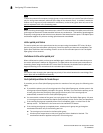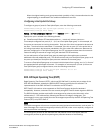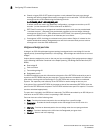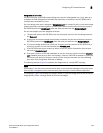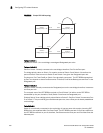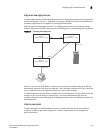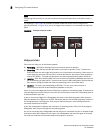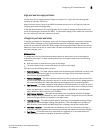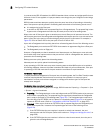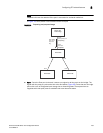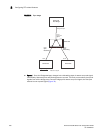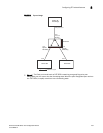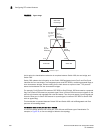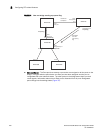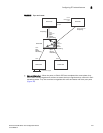
234 PowerConnect B-Series FCX Configuration Guide
53-1002266-01
Configuring STP related features
8
In contrast to the 802.1D standard, the 802.1W standard does not have any bridge specific timers.
All timers in the CLI are applied on a per-port basis, even though they are configured under bridge
parameters.
802.1W state machines attempt to quickly place the ports into either a forwarding or discarding
state. Root ports are quickly placed in forwarding state when both of the following events occur:
• It is assigned to be the Root port.
• It receives an RST BPDU with a proposal flag from a Designated port. The proposal flag is sent
by ports with a Designated role when they are ready to move into a forwarding state.
When a the role of Root port is given to another port, the old Root port is instructed to reroot. The
old Root port goes into a discarding state and negotiates with its peer port for a new role and a new
state. A peer port is the port on the other bridge to which the port is connected. For example, in
Figure 29, Port1 of Switch 200 is the peer port of Port2 of Switch 100.
A port with a Designated role is quickly placed into a forwarding state if one of the following occurs:
• The Designated port receives an RST BPDU that contains an agreement flag from a Root port
• The Designated port is an Edge port
However, a Designated port that is attached to an Alternate port or a Backup port must wait until
the forward delay timer expires twice on that port while it is still in a Designated role, before it can
proceed to the forwarding state.
Backup ports are quickly placed into discarding states.
Alternate ports are quickly placed into discarding states.
A port operating in 802.1W mode may enter a learning state to allow MAC entries to be added to
the filtering database; however, this state is transient and lasts only a few milliseconds, if the port
is operating in 802.1W mode and if the port meets the conditions for rapid transition.
Handshake mechanisms
To rapidly transition a Designated or Root port into a forwarding state, the Port Role Transition state
machine uses handshake mechanisms to ensure loop free operations. It uses one type of
handshake if no Root port has been assigned on a bridge, and another type if a Root port has
already been assigned.
Handshake when no root port is elected
If a Root port has not been assigned on a bridge, 802.1W uses the Proposing -> Proposed -> Sync
-> Synced -> Agreed handshake:
• Proposing – The Designated port on the root bridge sends an RST BPDU packet to its peer port
that contains a proposal flag. The proposal flag is a signal that indicates that the Designated
port is ready to put itself in a forwarding state (Figure 29). The Designated port continues to
send this flag in its RST BPDU until it is placed in a forwarding state (Figure 32) or is forced to
operate in 802.1D mode. (Refer to “Compatibility of 802.1W with 802.1D” on page 255).
• Proposed – When a port receives an RST BPDU with a proposal flag from the Designated port
on its point-to-point link, it asserts the Proposed signal and one of the following occurs
(Figure 29):
• If the RST BPDU that the port receives is superior to what it can transmit, the port
assumes the role of a Root port. (Refer to the section on “Bridges and bridge port roles” on
page 228.)
• If the RST BPDU that the port receives is inferior to what it can transmit, then the port is
given the role of Designated port.



